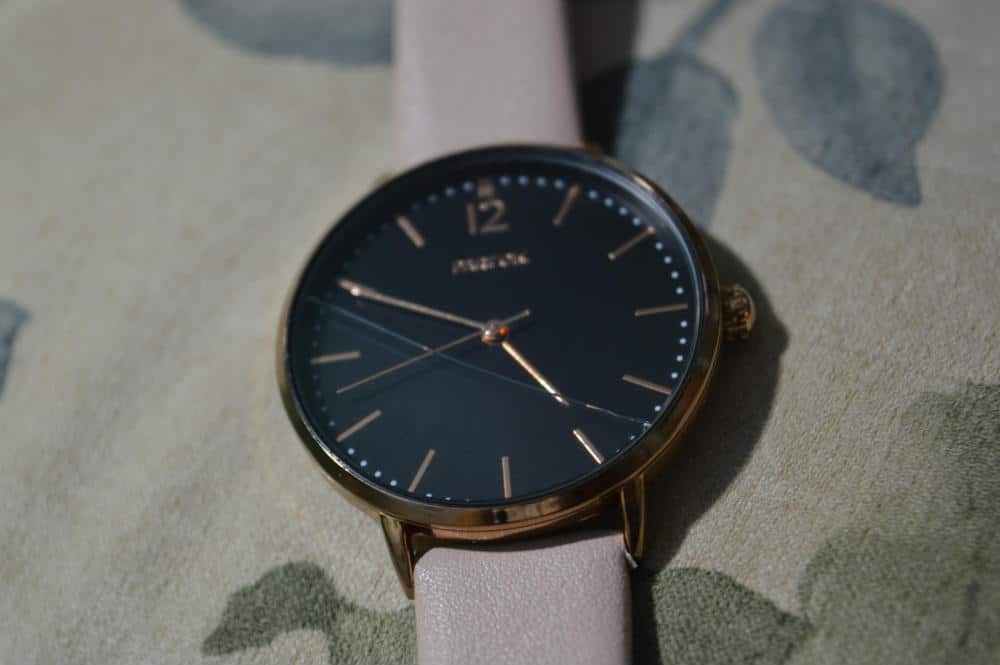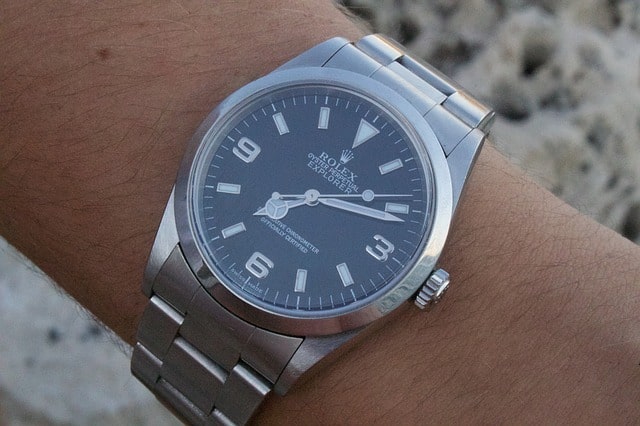Ever wondered why the covers of your watches make different sounds when you tap on them? It’s because not all of them are made from the same material. There are three types of watch crystals that are most commonly used in wristwatch glass covers – acrylic, mineral, and sapphire.
And all three are vastly different, in terms of scratch resistance, durability, and affordability. The general rule is that cheap watches have acrylic crystal, mid-range watches have mineral crystal glass, while only the most expensive ones use sapphire glass.
If you want to figure out which one is the most suitable for you, you can read all about their properties, including both the upsides and downsides of each material right here!
Acrylic Crystal Glass
Let’s start with the cheapest material, and make our way towards the premium ones. Acrylic crystals are very popular in really cheap watches. They are used most often because they are very affordable to produce, meaning that the manufacturing cost of watches with acrylic covers is super low.
But so it their quality. Acrylic covers are really prone to scratches, and that’s mostly because they are actually made from plastic and not real glass. Over time, the cover of your watch will look cloudy, which does not happen with crystal and sapphire glass. However, there is one upside to acrylic – you can easily polish out the scratches yourself.

Sometimes it’s as simple as rubbing toothpaste on your watch cover. You can also use products that are designed specifically for polishing out acrylic crystals, like Polywatch, Brasso or Displex.
Don’t rule out acrylic crystals just yet. They do have their benefits; for one thing, they are definitely the most lightweight material. And if you need a super lightweight watch, then this is your best bet.
Additionally, this material is also frequently used in kids’ watches. In fact, even the more prominent brands like Swatch and Timex use acrylic-based glass for some of their watches. It’s super easy and cheap to replace if it breaks, which you will probably need to do more than once if you’re getting your child a watch.
But that’s also because acrylic crystals break easily. You still need to apply a lot of pressure to break them, but they crack much faster than mineral crystals. Because of that, they are definitely not a good choice for people who lead active lifestyles and need something really durable.
Mineral Crystal Glass
Mineral crystal-based glass is most frequently used in mid-range watches. You’ll see it in most high-street brands as well because it is durable and scratch-resistant, but also pretty affordable. Which is the perfect balance for large manufacturers.
Seiko even has their proprietary material – Hardlex. But it is still mineral-based glass, and it has the same properties as mineral crystal glass used in other watches. It’s pretty scratch resistant, but not completely like sapphire.
One downside of mineral-based glass is that you need to completely replace if it breaks. It can’t be repaired, and you can’t even polish out the scratches like you can with acrylic. But the good news is that the scratches and even breaks are not really that visible. It took a while to realize that the glass on my watch had a huge crack. And I’m still wearing it because the crack is only noticeable from certain angles!

This type of glass is most commonly used by brands like Seiko, Swatch, Tissot, and Casio. Basically, if you own a standard, medium-priced watch, the glass on it is most likely mineral crystal.
This glass is manufactured by using tempered glass made from silica, which significantly improves its scratch resistance. Additionally, some brands use AR (anti-reflective) or anti-glare coating on the cover. The coating can make your watch look more aesthetically pleasing since it pretty much removes any reflections from the front of the watch.
This also helps improve readability in bad lighting conditions, and overall make your wristwatch much convenient to use. If you struggle to make out the dials on your watch in direct sunlight, then it most likely does not have AR coating.
Sapphire Crystal Glass
Sapphire is basically the best type of watch crystals. But it’s also the most expensive one, which is why we only see it in luxury watches like Rolex, Patek Philippe or TAG Heuer. That’s due to the hardness of the material – it scores a 9/10 on the Mosh hardness scale. With the 10 being reserved for the hardest type of watch crystal out there – diamond.
However, it’s much more commonly used than you think. In fact, if you have an iPhone, then you can check out the resistance of this crystal yourself. iPhone cameras are covered with sapphire, precisely because of how scratch resistant it is. That’s why your camera never scratches, even when you accidentally put your phone in the pocket where your keys are.

The same goes for watches – you won’t see a Rolex with a nasty scratch, that’s for sure. Because of that, these types of watches are perfect for people who lead an active lifestyle and need something exceptionally durable. However, there is one downside to this type of crystal – it shatters upon hard impact.
With lower-end watches, the glass cover will often chip in larger pieces. This makes it slightly easier to repair. Sapphire, on the other hand, doesn’t chip away in large pieces. Instead, it shatters in a million tiny pieces, which can be pretty difficult to replace. And also really expensive – basically, it’s cheaper to get a brand new mid-range watch than to replace the sapphire glass cover of your luxury one.
Obviously, that does not happen often. Your expensive watch will survive an occasional encounter with the door or the edge of the table, just like your phone’s camera survives falling to the ground from a height of 4-5 feet. You would have to apply a lot of pressure to the sapphire crystal to shatter it – taking a hammer to it would certainly do the job. But it’s really hard to break it with mundane activities, so as long as you are careful enough with your watch, it should live a long life.
